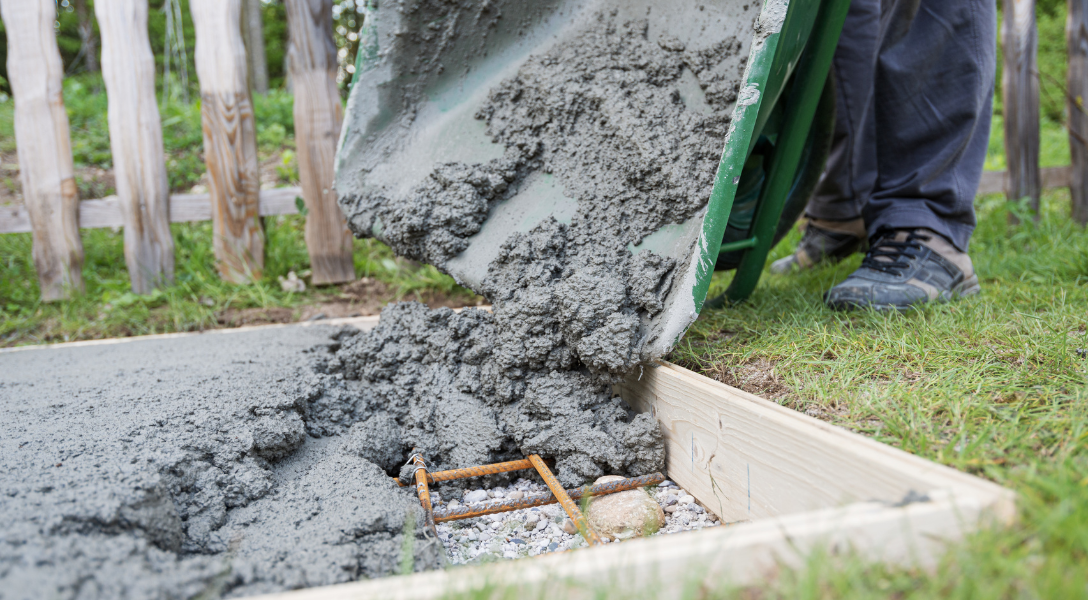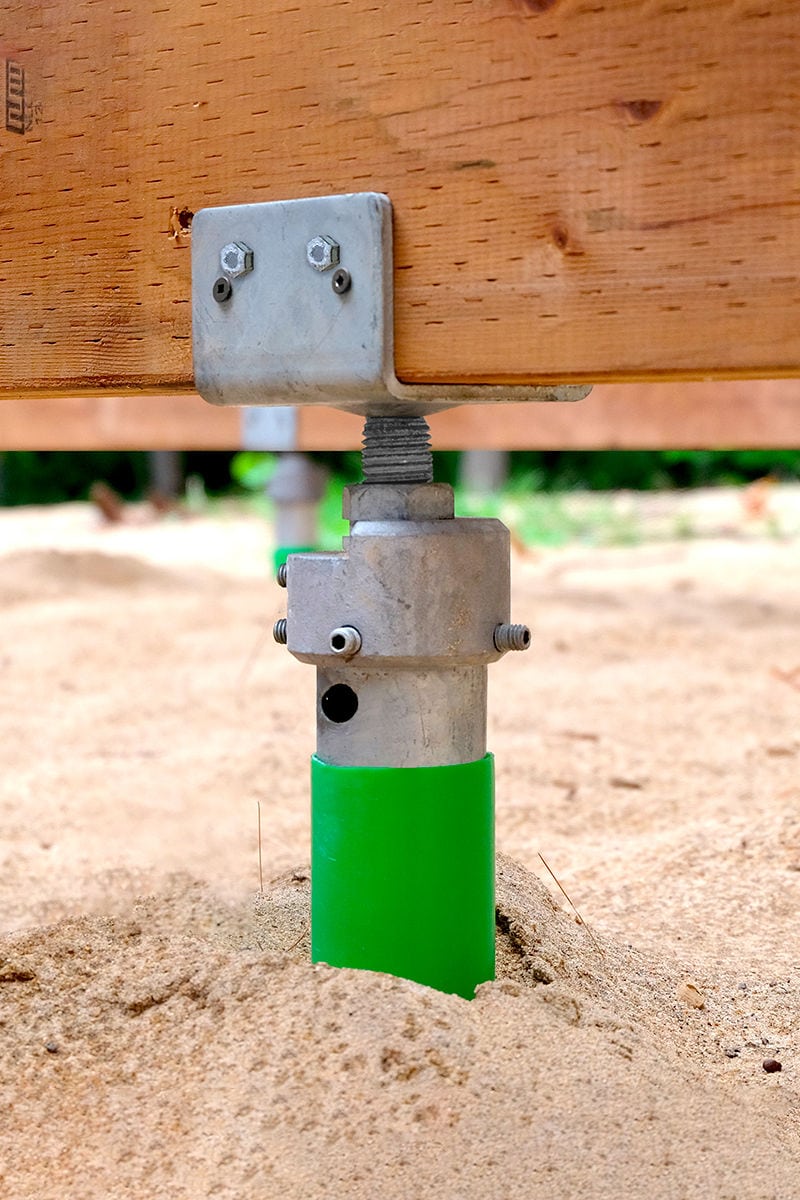Professional Tips for Setting Up Deck Footings to Support Your Outdoor Room
When it comes to constructing a deck, one of the most critical aspects to take into consideration is the installation of correct grounds. These grounds are the structure upon which your exterior area will certainly relax, supplying security and assistance for years to come. What exactly does it take to set up deck grounds correctly?
Value of Appropriate Deck Footings
Correct deck grounds are vital for guaranteeing the security and longevity of your exterior room. Without solid and correctly installed grounds, your deck may become unstable, leading to safety risks and costly repairs.

In enhancement to stability, appropriate deck footings also add to the longevity of your exterior area (Deck Footings). Footings that are developed and constructed to stand up to the aspects and soil conditions in your area will assist prevent the deck from working out or changing with time. By making sure the footings are properly sized and mounted, you can decrease the threat of damage to the deck framework, extending its life-span and minimizing the need for expensive repair work or substitutes

Picking the Right Type of Footings
When choosing the proper kind of footings for your deck, it is vital to consider elements such as soil conditions, local building regulations, and the overall layout of your outdoor space. The type of footing you select will play a critical role in making sure the security and longevity of your deck.
One typical kind of footing is the concrete ground. Concrete footings appropriate for most dirt problems and supply superb support for decks. They are normally installed below the frost line to stop changing and working out as a result of freezing and thawing cycles. One more choice is helical piers, which are excellent for locations with unstable soil or high water tables. These piers are screwed into the ground and supply solid assistance for the deck.
Sometimes, you may require to utilize specialized grounds, such as heap footings or deep structures, if you are building a multi-level or huge deck. These footings are created to disperse the weight of the deck over a bigger location, making sure stability and stopping resolving or sinking.
Before selecting a kind of footing, it is important to get in touch with regional structure codes and regulations to ensure conformity. In addition, think about the design and planned use your exterior space. Variables such as the dimension, shape, and load-bearing needs of your deck will certainly influence the sort of footing that is most suitable.
Preparing the Ground for Footing Installment
To effectively prepare the ground for footing setup, it is very important to analyze the dirt conditions and take needed steps to ensure security and longevity of the deck. The very first action is to excavate the location where the footings will certainly be installed. The deepness of the excavation will depend upon the frost line in your region and the certain requirements of the deck style. It is important to remove any kind of greenery, rocks, or particles from the excavation to guarantee a solid structure.
Once the area has actually been excavated, the next action is to compact the soil. This can be done making use of a plate compactor or by using a hand tamper. Condensing the dirt helps to get rid of any kind of spaces or air pockets, which can cause working out and instability gradually.
After compacting the soil, it is essential to lay a layer of gravel or crushed rock at the end of the check my site excavation. This will give drainage and help to stop water from merging around the grounds, which can cause disintegration and instability.
Step-by-Step Overview to Setting Up Deck Footings
After appropriately preparing the ground for footing installment, the next action is to start the procedure of installing deck footings. This step-by-step guide will provide you with a clear understanding of how to set up deck footings for your outside area.
Determine the area: Beginning by noting the placements of the deck grounds making use of risks and string. Make certain that the areas straighten with the layout and format of your deck.
Dig the openings: Utilize a message hole digger or an auger to dig the holes for the footings. The deepness and diameter of the holes need to be in accordance with regional building regulations and the specific demands of your deck style.
Level the openings: Utilize a level to make sure that the holes are dug to the proper deepness and are degree with each other. (Deck Footings)
Add crushed rock: Location a layer of gravel at the bottom of each opening to boost drain and avoid the wood from rotting.
Put the grounds: Put the footings right into the holes, seeing to it they are degree and plumb. her latest blog Utilize a level and a measuring tape to ensure accuracy.
Safeguard the footings: Pour concrete right into the openings around the grounds, filling them to the top. Utilize a post level to make certain the grounds remain degree as the concrete sets.
Allow time for curing: Let the concrete treatment according to the supplier's directions before waging the deck building.
Typical Errors to Prevent During Footing Setup
One essential element to consider throughout the setup of deck footings is staying clear of common blunders that can compromise the security and longevity of your exterior room. While deck grounds might look like a simple and simple part of the building process, ignoring certain aspects can lead to pricey repairs and possible safety dangers down the line.

Additionally, disregarding to install correct drain procedures can trigger water to build up around the footings, causing rot, degeneration, and the ultimate weakening of informative post the deck's foundation. Utilizing the wrong type of footing product or falling short to adequately safeguard the footings can compromise their architectural integrity.
To stay clear of these mistakes, it is vital to talk to a professional or comply with sector guidelines to ensure proper footing setup. By doing so, you can guarantee the security and durability of your outside room, giving a enjoyable and safe environment for many years to find.
Final Thought
Finally, mounting correct deck grounds is crucial for the stability and longevity of your outdoor space. By choosing the best kind of footings and effectively preparing the ground, you can make certain a strong structure for your deck. Complying with a detailed overview and preventing typical errors throughout footing installation will further enhance the toughness and safety and security of your deck.
Proper deck footings are vital for making certain the security and durability of your exterior room. The grounds offer as a link in between the ground and the deck, allowing the weight of the deck and its residents to be dispersed uniformly into the dirt.One typical type of footing is the concrete footing. Place the footings: Place the footings into the openings, making sure they are degree and plumb. Protect the footings: Pour concrete right into the holes around the grounds, filling them to the top.